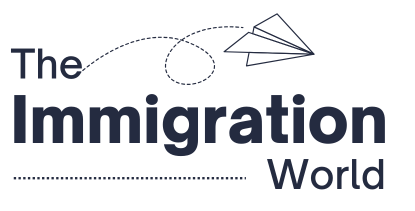Skilled workers eyeing New Zealand in 2025 are in for some welcome news. The government has rolled out a new set of updates to its work visa system—particularly the Accredited Employer Work Visa (AEWV)—that make it significantly easier to secure a job and a visa. From smoother processes to more flexible eligibility rules, these changes aim to ease the talent crunch in critical sectors. So if you’ve been thinking about making the move to Aotearoa, now might be your best chance yet.
Key Takeaways
What Has Changed in New Zealand’s Skilled Work Visa Process in 2025?
New Zealand’s immigration policy has often leaned on the cautious side, but 2025 is shaping up to be the year it turns a new page. One of the biggest changes involves the AEWV, the primary visa for skilled foreign workers. The government has removed the blanket median wage requirement, making it easier for employers to hire for roles that don’t necessarily pay at or above national median levels.
Another major shift is the streamlining of visa steps. Processes like the “Job Check,” which previously caused delays, are now being sped up, especially for accredited and trusted employers. The emphasis has also shifted toward making the system more employer-friendly, with reduced paperwork, shorter processing times, and clearer pathways to permanent residency. And for the worker? All of this translates to fewer hurdles and faster approvals.
Is Work Experience Now More Important Than a Formal Qualification?
Absolutely. In a clear move toward valuing hands-on skills, the work experience requirement has been reduced from three years to just two for many AEWV applicants. More importantly, New Zealand is increasingly allowing applicants to bypass formal academic qualifications—especially in high-demand trades and practical roles—if they can demonstrate relevant on-the-job experience.
This change levels the playing field for skilled tradespeople, IT professionals, and care workers who may not hold a degree but bring years of valuable experience. And with a broader exemption list now in place, more occupations are falling into this experience-over-degree category. If you’ve been sidelined in the past because you didn’t have a formal certificate, 2025 could be your second chance.
Which Occupations Are Now on the Expanded Scarce Skills List?
The updated Scarce Skills Shortage List is at the heart of New Zealand’s efforts to attract international talent. It’s been expanded to include roles across healthcare, construction, engineering, IT, education, and agriculture. Some standout roles that now qualify for fast-tracked visa processing include registered nurses, aged-care workers, software developers, construction project managers, diesel mechanics, early childhood teachers, and horticulture specialists.
Also Read: How Can You Get New Zealand Citizenship Faster in 2025?
This expansion is more than a bureaucratic reshuffling—it’s a reflection of real workforce gaps across the country. Employers in both urban and regional areas are struggling to fill positions, and the new list ensures they can hire qualified migrants without long waits or red tape.
How Has the Job Check Process Been Simplified?
The infamous Job Check—once a significant bottleneck in the AEWV process—has been given a much-needed overhaul. Starting July 2025, trusted and low-risk employers will benefit from a simplified version of the Job Check that cuts down on both time and paperwork.
Essentially, if an employer has a strong compliance record and an active accreditation, they’ll be able to skip some of the more tedious steps and get their job postings cleared faster. For skilled migrants, this means fewer delays between receiving a job offer and submitting a visa application. It also gives you a clearer sense of whether the employer is genuine and likely to support your application successfully.
What Are the Benefits of Interim Work Rights for Applicants?
No more worrying about a gap between your current visa expiring and your new one being processed. One of the most worker-friendly updates in 2025 is the introduction of interim work rights. Effective from April, migrants who are already working in New Zealand and applying for a new AEWV can continue working legally while their new application is under review.
This is a significant shift. Previously, applicants faced uncertainty—and even forced breaks in employment—while waiting for visa decisions. Now, you can maintain your job, your income, and your peace of mind, knowing your rights are protected while Immigration New Zealand finalizes your new visa.
Are Visa Durations and Residency Pathways More Flexible Now?
Yes, and the changes are quite substantial. Visa durations for mid-skilled workers have been extended from two to three years, giving applicants more stability and a longer horizon to plan their lives in New Zealand. High-skilled workers already had access to longer visas, but this change now brings mid-level talent into the fold.
On the residency front, the Green List continues to offer a direct-to-residence pathway for workers in critical roles. For others, a two-step process (work first, then apply for residence) has become more streamlined. Combined with new regional incentives and a growing focus on family-friendly migration, these adjustments make New Zealand a more appealing long-term option.
Who Stands to Benefit Most from These Changes?
The reforms are broadly designed to benefit three main groups: skilled migrants, New Zealand employers, and transitioning visa holders. For migrants, particularly those with practical experience but no formal degree, this is a golden opportunity. If you’re a recent graduate or someone already in New Zealand on a student or post-study work visa, the updated AEWV rules make it easier to transition into skilled employment and eventually into residency.
Employers—especially those in construction, healthcare, and IT—now have a smoother path to hiring the talent they need without long wait times or overly complex compliance requirements. Meanwhile, those already in the country with a valid visa don’t have to worry about job gaps thanks to interim work rights.
Final Thoughts: Is It Time to Make the Move?
With its 2025 reforms, New Zealand has positioned itself as one of the more accessible and responsive countries for skilled migration. By lowering qualification barriers, fast-tracking visa processes, and offering real pathways to residency, it’s clear the country is serious about attracting talent—and making sure that talent stays.
If you’ve been on the fence about applying, there may not be a better time. The application process has never been this straightforward, and with visa durations extended and employers better equipped to support you, you might just find your perfect fit in New Zealand.
Reference; https://www.immigration.govt.nz/visas/skilled-migrant-category-resident-visa/





